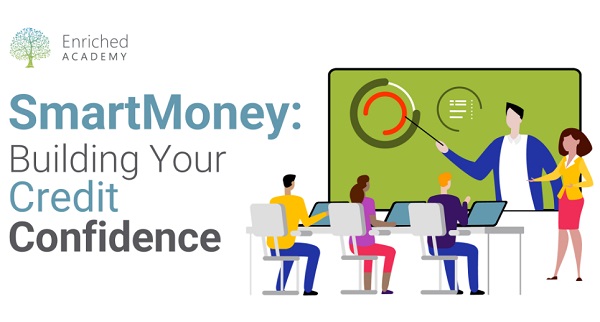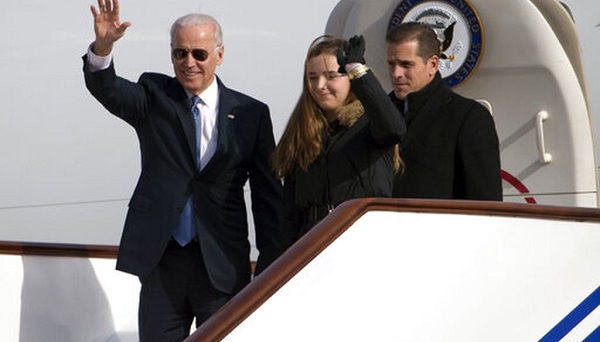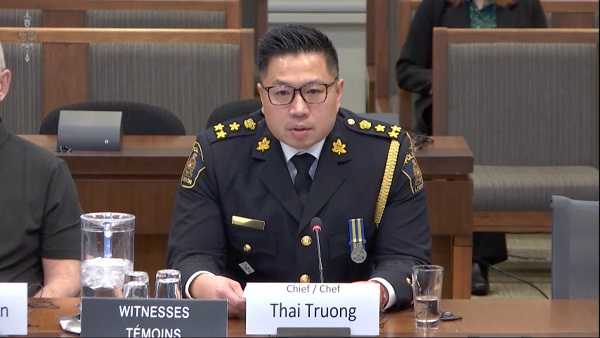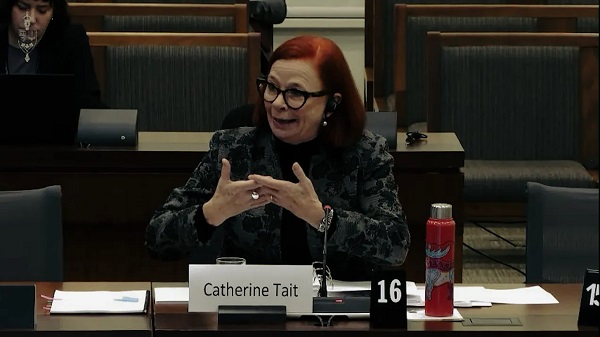Education
Local college students the focus of RDC study on student debt and financial wellness.

Student Debt & Financial Wellness
By Jason Engel and Doug MacDormand
A recent poll completed by Ipsos for BDO Canada showed that over three quarters of post-secondary students regret the amount of debt they accumulate while in school. There is certainly a lot of discussion about the financial burden facing students in post-secondary education, and how financially literate and financially well students are. With this in mind a group of students at Red Deer College completed a study on student debt and financial wellness.
With debt a concern amongst post-secondary students, it is not surprising to find that the largest portion of their education funding (33%) comes from student loans. The second largest (23%) comes from parents or family, followed by work (19%). With debt loads continuing to rise amongst students, this is a source of considerable concern. Just over half of students reported using student loans. Of those, over 40% expect to have a student debt load of over $30,000 upon graduation. 70% reported they expect over $20,000 in debt. A $30,000 student debt would equate to a monthly payment of roughly $375 over ten years, depending upon the interest rate. Statistics Canada reports that the average student debt in Canada is $26,000, so these expectations would seem to accurately reflect reality.

Where funding comes from: 33% student loans 23% parents / family 19% working
The vast majority (81%) have a credit card. 59% pay it in full every month, which is slightly higher than the overall population. It is encouraging that students are improving on their parents’ record of financial management. Of those that have a balance, they tend to be lower, with over 80% having a balance under $2,500. This would be lower than the general population, though this would likely be restricted by the limits that lenders would allow for students. Students feel pretty good about their savings habits and credit card management. Just over half reported that they are good or very good at saving for the future. Two-thirds reported they are good or very good at managing their credit card.

81% of students have a credit card. 59% of cc holders pay entire balance every month.
Not surprisingly, the vast majority of students work, with only just under one quarter (24%) reporting that they do not. Just over one half (52%) work part time. When it comes to transportation, the vast majority (76%) drive to school and work. The largest segment (41%) lives with parents or family, while the next largest rent (34%).

Other financial factors: 52% of RDC students have a part time job. 76% drive to school. 41% live at home. 34% rent.
For financial advice, students tend to go to family first, rely on themselves second and the internet third. This has interesting implications for financial advisors, in particular in light of recent developments around robo advisors.
The Donald School of Business, Red Deer College strives to bring practical, real world learning experiences to the classroom. Every year business degree students complete statistical studies on various topics. These studies are completed for a client, such as a local business or non-profit organization. This year, one group chose as their topic the financial wellness of students.
The students that completed the study are Alexander Abuzidan, Malika Khanjer, Jameica Miller, Amanda Tuccaro, Sangita Pandey and Morgan Vandenhoven. 200 Red Deer College students were surveyed during March of 2018. These survey findings are accurate with a 7% margin of error, 19 times in 20.
Red Deer College is a comprehensive community college serving learners in central Alberta with a variety of certificates, diplomas, collaborative degrees, trades, and continuing education. The Alberta government recently announced that RDC will be pursuing university status. Jason Engel and Doug MacDormand are instructors in the Donald School of Business, Red Deer College.
Alberta
Parents in every province—not just Alberta—deserve as much school choice as possible

From the Fraser Institute
Not only does Alberta have a fully funded separate (Catholic) school system, it also provides between 60 and 70 per cent operational funding to accredited independent schools. In addition, Alberta is the only province in Canada to allow fully funded charter schools. And Alberta subsidizes homeschooling parents.
This week, the Smith government in Alberta will likely pass Bill 27, which requires schools to get signed permission from parents or guardians prior to any lessons on human sexuality, gender identity or sexual orientation.
It’s a sensible move. The government is proactively ensuring that students are in these classes because their parents want them there. Given the sensitive nature of these topics, for everyone’s sake it makes sense to ensure parental buy-in at the outset.
Unfortunately, many school trustees don’t agree. A recent resolution passed by the Alberta School Boards Association (ASBA) calls on the Smith government to maintain the status quo where parents are assumed to have opted in to these lessons unless they contact the school and opt their children out. Apparently, the ASBA thinks parents can’t be trusted to make the right decisions for their children on this issue.
This ASBA resolution is, in fact, a good example of the reflexive opposition by government school trustees to parental rights. They don’t want parents to take control of their children’s education, especially in sensitive areas. Fortunately, the Alberta government rebuffed ASBA’s demands and this attempt to abolish Bill 27 will likely fall on deaf ears.
However, there’s an even better safeguard available to Alberta parents—school choice. Out of all Canadian provinces, Alberta offers the most school choice. Not only does Alberta have a fully funded separate (Catholic) school system, it also provides between 60 and 70 per cent operational funding to accredited independent schools. In addition, Alberta is the only province in Canada to allow fully funded charter schools. And Alberta subsidizes homeschooling parents. Simply put, parents who are dissatisfied with the government school system have plenty of options—more than parents in any other province. This means Alberta parents can vote with their feet.
Things are quite different in other parts of the country. For example, Ontario and the four Atlantic provinces do not allow any provincial funding to follow students to independent schools. In other words, parents in these provinces who choose an independent school must pay the full cost themselves—while still paying taxes that fund government schools. And no province other than Alberta allows charter schools.
This is why it’s important to give parents as much school choice as possible. Given the tendency of government school boards to remove choices from parents, it’s important that all parents, including those with limited means, have other options available for their children.
Imagine if the owners of a large grocery store tried to impose their dietary preferences by removing all meat products and telling customers that the only way they could purchase meat is to make a special order. What would happen in that scenario? It depends on what other options are available. If this was the only grocery store in the community, customers would have no choice but to comply. However, if there were other stores, customers could simply shop elsewhere. Choice empowers people and limits the ability of one company to limit the choices of people who live in the community.
Think of government school boards as a monopolistic service provider like a grocery store. They often do everything possible to prevent parents from going anywhere else for their children’s education. Trusting them to do what’s best for parents and children is like assuming that the owners of a grocery store would always put the interests of their customers first and not their own self-interest. Monopolies are bad in the private sector and they’re bad in the education sector, too.
Clearly, it makes sense to require schools to get proactive consent from parents. This ensures maximum buy-in from parents for whatever courses their children take. It’s also important that Alberta remains a bastion of school choice. By making it easier for parents to choose from a variety of education options, Alberta puts power in the hands of parents, exactly where it belongs. Parents in other provinces should want that same power, too.
Alberta
Province investing in support for financial literacy in schools

Financial literacy prepares students for their futures
Students across Alberta will build the fundamental life skills they need to grow into adulthood through support for financial literacy programming.
Saving, budgeting, investing and the ability to make wise financial decisions are fundamental life skills Alberta’s youth need to develop as they grow into adulthood. Alberta’s government is ensuring that students have every opportunity to develop these fundamental life skills by integrating financial literacy into the K-12 curriculum and providing grant funding to three Canadian organizations to offer dedicated financial learning resources for students and teachers.
“We are proud to support financial literacy programming for students. Our on-going support for financial literacy education will help young Albertans navigate their futures with confidence by helping them build the fundamental life skills they need to prosper and secure their futures in today’s fast-moving world.”
In May 2022, Alberta’s government invested $5 million over three years into financial literacy programming to ensure students have the financial knowledge they need to thrive in life. Enriched Academy receives $900,000 per year and the Canadian Foundation for Economic Education receives $500,000 per year to provide students in grades 5 to 12 with financial literacy programming, aligned with the curriculum, to improve their financial knowledge. In addition, Junior Achievement receives $250,000 per year to provide hands-on, experiential financial literacy, work readiness and entrepreneurship education to students in kindergarten to Grade 6.
“Our support for financial literacy programming will set Alberta’s youth up for success. This programming will ensure that Alberta’s youth develop the fundamental life skills they need to manage their personal finances, make sound financial decisions, and grow into adulthood with confidence.”
Free financial literacy webinar
Some of the funding provided will support Enriched Academy hosting a free live webinar for grades 4 to 12 students and teachers on Tuesday, November 26, as part of their financial literacy programming. The webinar will teach students how to build their credit with confidence and will feature an interactive gameshow format to engage and motivate students to learn how credit works and how to manage credit and their personal finances with confidence. Students and teachers who are interested in participating can register for the webinar online.
“Our partnership with the Government of Alberta has enabled us to deliver transformational financial literacy education to nearly six hundred thousand students across the province. As a high school teacher, I’ve witnessed firsthand how financial literacy education empowers students, increasing their confidence in money management and preparing them to be financially responsible. Investments in financial literacy are investments in our students’ futures, and I’m already seeing it pay dividends for Alberta students.”
Teachers can also access lesson plans, activities, and interactive tools from all three organizations’ websites to support financial literacy learning outcomes in Alberta’s curriculum.
Quick facts
- Financial literacy programming offered by the three organizations reaches more than 350,000 students annually.
- Alberta’s renewed K-6 curriculum includes an increased emphasis on financial literacy skills, as well as a stronger foundation in financial literacy in all grades.
Related information
-

 David Clinton2 days ago
David Clinton2 days agoWhat Happens When Ministries Go Rogue?
-

 Automotive2 days ago
Automotive2 days agoNorthvolt bankruptcy ominous sign for politicians’ EV gamble
-

 Crime2 days ago
Crime2 days agoWhat did Canada Ever Do to Draw Trump Tariff on Immigration, You Ask? Plenty
-

 Daily Caller2 days ago
Daily Caller2 days agoCNN’s Scott Jennings Says History Will Remember Biden As ‘Complete And Total Disgrace’ Over Hunter Pardoning
-

 Addictions2 days ago
Addictions2 days agoLondon Police Chief warns parliament about “safer supply” diversion
-

 Automotive2 days ago
Automotive2 days agoElectric-vehicle sales show modest spark
-

 Health2 days ago
Health2 days agoFauci admitted to RFK Jr. that none of 72 mandatory vaccines for children has ever been safety tested
-

 Daily Caller2 days ago
Daily Caller2 days ago‘Dark Day’: Another Western Country Backs Doctor-Assisted Suicide, Opens Door To ‘Murder Of Old And Sick’







